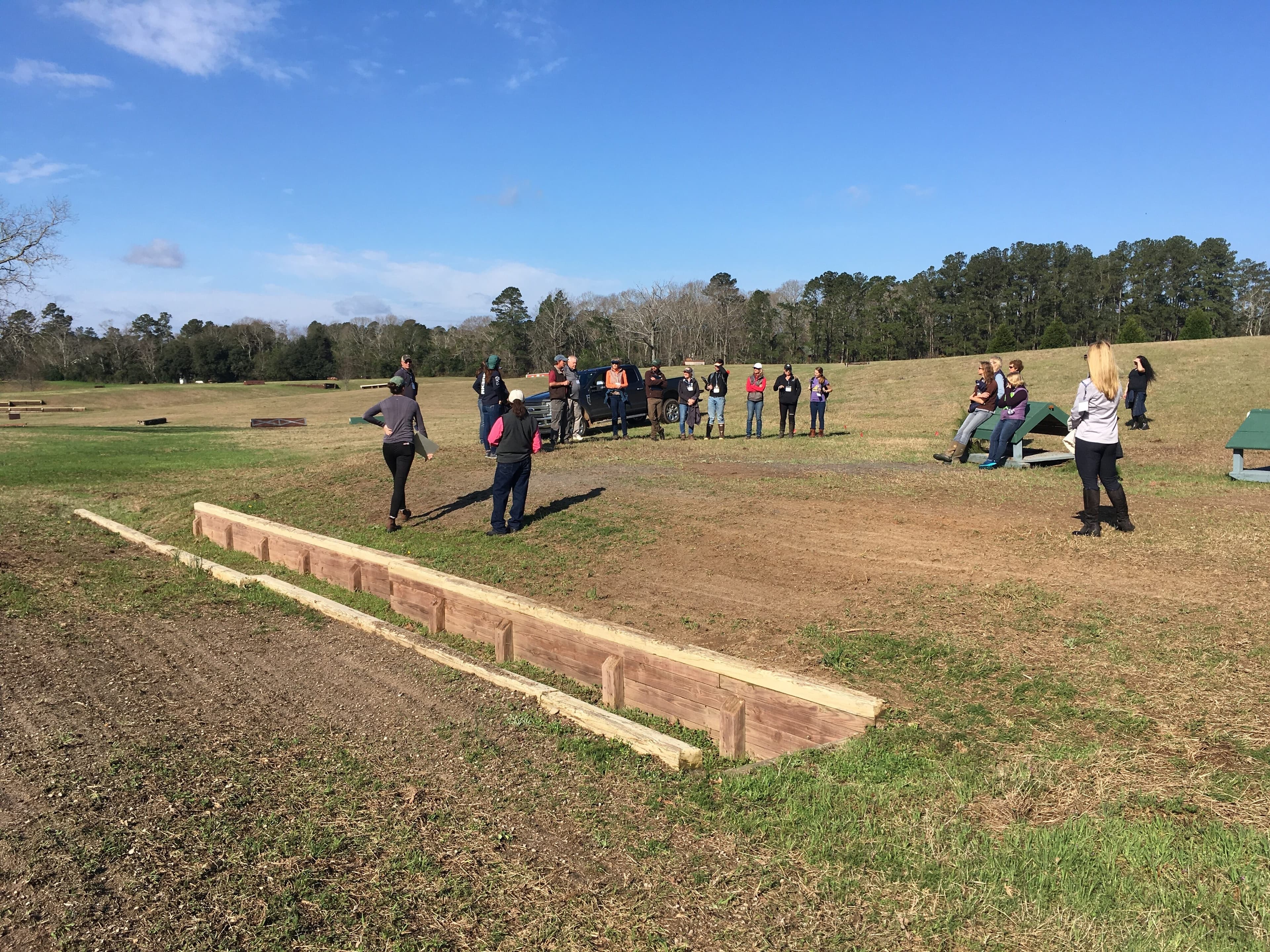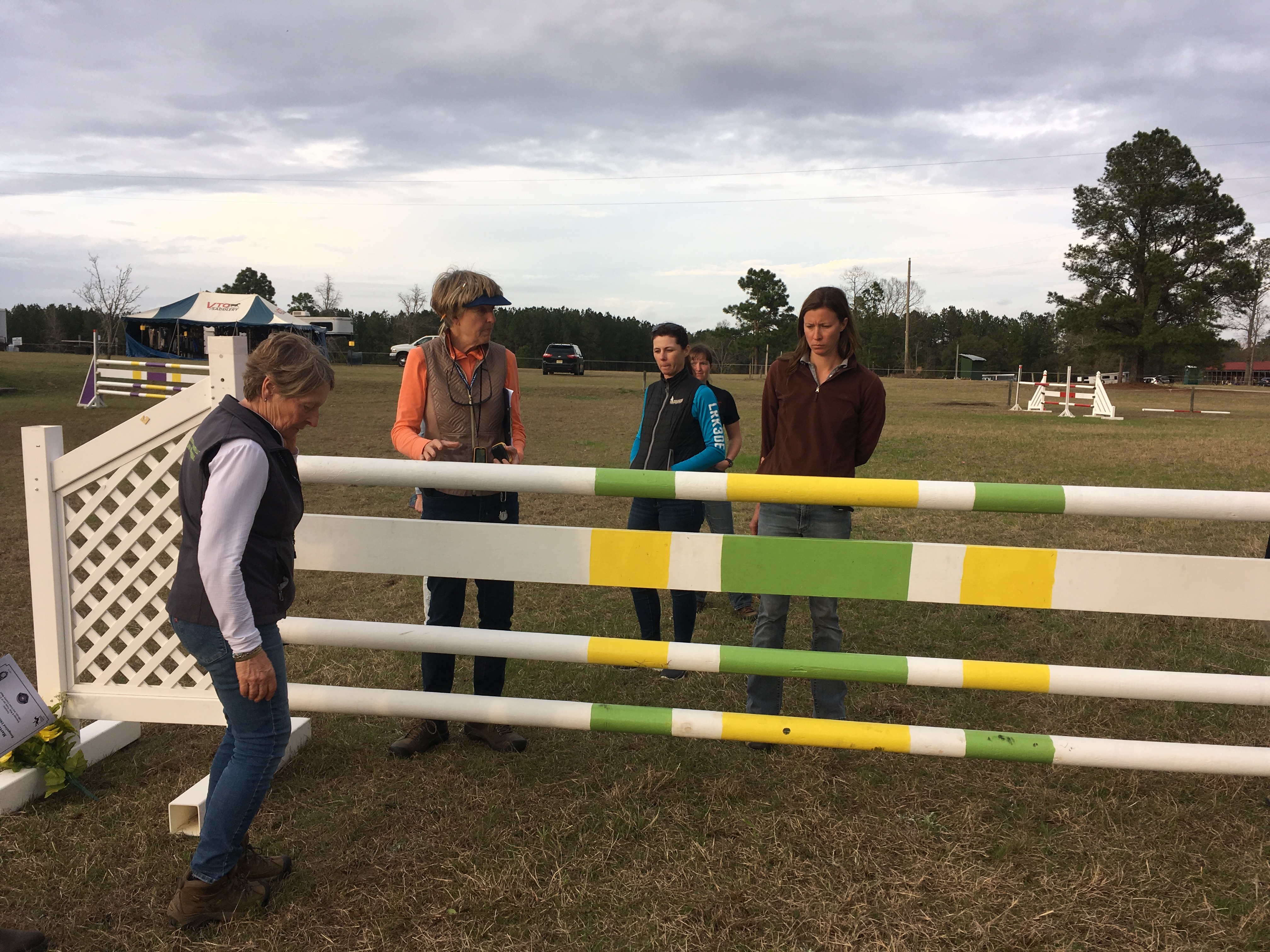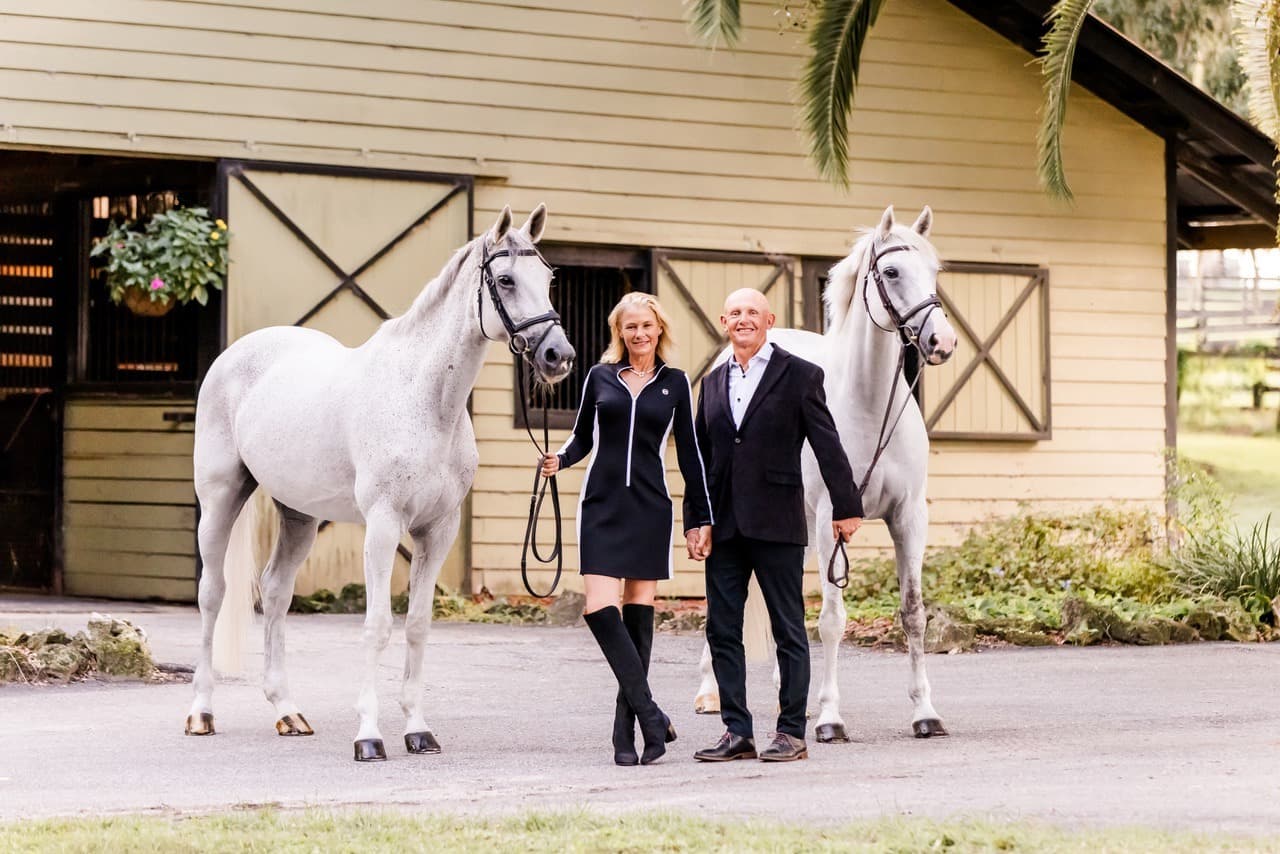Official's Journal: “r” B & C Jumping/Course Design Training Program

Erin Kimmer is on a journey to obtain her USEF “r” Technical Delegate license and is taking us along with her through the Training Program for Eventing Officials. Click here to read her first installment.
I attended the “r” B & C Jumping/Course Design Training Program on March 1-3, 2019 in Aiken, South Carolina. This training session was for course designers, technical delegates, and eventing judges. We met at Sporting Days Farm on a cold and rainy morning. Our clinicians for the training program were Gretchen Butts, who is a “S” and 3*/4* FEI Eventing Judge and TD, Sue Smithson, a “S” Eventing Judge and “r” TD, and John Williams, a “S” and 3*/4* Course Designer and a “R” TD and Eventing Show Jump Course Designer. After brief introductions, we discussed the difference between the types of officials and what their roles and expectations are.
We then headed out to the cross-country course to walk the Preliminary and Training level courses. As we walked, we discussed different aspects of course design like jump decoration and the implementation of safety technology like MIM clips. We also discussed how to measure a variety of jumps, including the height, top spread, and base spread.

After lunch, the judges remained at Sporting Days to inspect and critique the show jumping course. The course designers departed for Paradise Farm to work on their designs that they would present to the group the next day. We walked and measured the course and discussed if we thought it was appropriate for the level. After walking, we talked about what can be expected for both eventing judges and TDs during dressage. Our clinicians stressed that many issues can be avoided by taking the time and double checking the dressage pre event set up, speaking with the stewards ahead of time, and making sure they have all of the proper equipment.
The next morning we met out at Paradise Farm to inspect and discuss what the course designers had worked on the day before. Each designer had come up with a cross-country element that was appropriate for Training, Modified and Preliminary levels to share. After presenting their designs, we as a group evaluated the designs. Our clinicians explained that, as officials, this was what we could expect to experience in our roles with course designers, TDs, and judges all working together.

After lunch we then as a group went through several cross-country case studies. Case studies are extremely helpful because they address many of the “what if” moments that can happen when officials must assess and make a judgment call. They are some of my personal favorites because they bring to light some of the very odd things that can happen at horse shows and allow the opportunity to discuss them in detail.
We then took a short break and reconvened again at Sporting Days Farm. The judges and TDs helped to assemble the Intermediate show jumping track for the next day’s competition. We built, measured, and discussed the track for level appropriateness. We also assessed the warm up and possible changes that we could make to allow the show to flow easier the next day. These are all things that can be expected for us to handle as officials.

Sunday morning we met at the Clarion Inn to discuss show jumping in further detail. We first talked about pre-event set up for show jumping to try to eliminate problems before they arise. We were then provided with Polaris timers that most shows use to time show jumping. We were shown how to use them correctly, and then we watched several show jumping rounds and judged and timed them ourselves. We then finished by discussing show jumping case studies.
If anyone is ever interested in understanding a judge’s perspective a little more, I highly suggest attending or auditing one of these sessions. Our clinicians were a wealth of knowledge and really fantastic. The training session not only help me to become a more knowledgeable official, but a better rider and competitor. As officials, we must be able to work together and create solutions and make sure that rules are being followed to ensure the safest possible outcome for all of our competitors.














